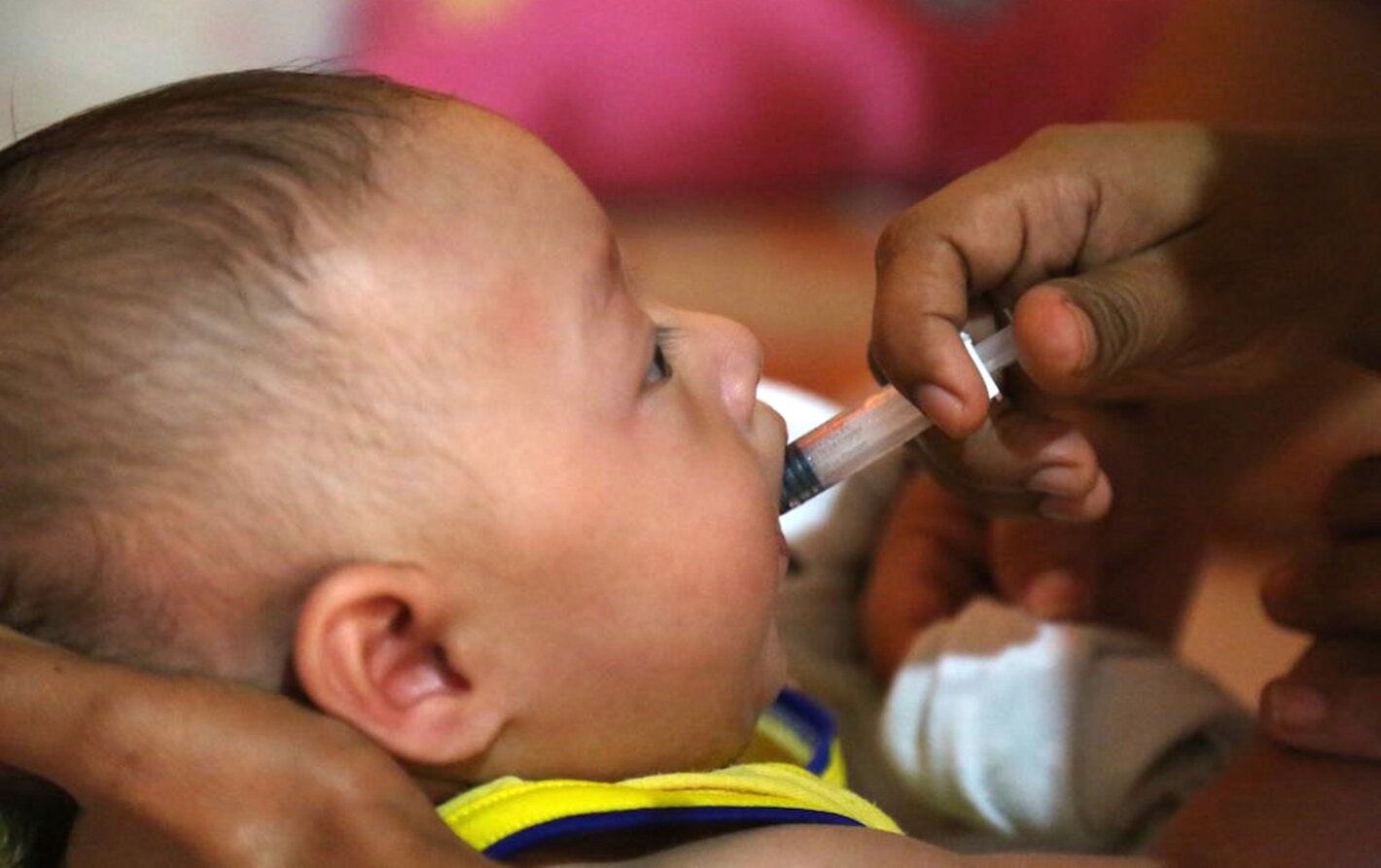
Declining immunization rates, which have worsened amid the COVID-19 pandemic, have raised concerns about reintroduction of the disease.
Washington, DC, October 22, 2021 (PAHO) – On the eve of World Polio Day, celebrated on October 24, the Pan American Health Organization (PAHO) is marking the 30th anniversary of the last case of poliomyelitis in the Americas. In August 1991, a Peruvian boy from the country’s Junín mountains became the last person to be detected with the wild poliovirus. Three years later, in 1994, the Americas became the first region in the world to be certified as polio free by the World Health Organization (WHO).
“This extraordinary accomplishment was made possible by mass vaccination efforts and robust epidemiologic surveillance that was underpinned by a strong network of laboratories,” PAHO Director Dr. Carissa F. Etienne said.
As we recognize World Polio Day this Sunday, we’re reminded of what this region can achieve when it works together to keep health threats in check, when we protect the most vulnerable, and ensure all people have access to life-saving vaccines.”
PAHO Director Dr. Carissa F. Etienne
PAHO is also calling on countries to increase polio vaccination rates, which have declined in recent years due to various causes, including increased vaccine hesitancy.
Even before COVID-19, polio vaccination had fallen below the 95% coverage rate recommended to prevent the reintroduction of the virus. Amid the pandemic – which has disrupted health services across the region, including routine immunization – polio vaccination rates have continued to fall. In 2020, only 80% of children had received the third dose of the oral vaccine needed for full immunization – a decline from 87% in 2019.
Strong surveillance and continued vaccination are the only ways to ensure that we remain polio free and support polio eradication at the global level. We must increase polio vaccination in the children of the Americas, strengthen our epidemiological surveillance, and support our polio laboratory networks.”
Dr. Cuauhtemoc Ruiz Matus, head of PAHO’s Immunization Program said.
Dr. Ruiz urged families to make sure children get all recommended doses of the polio vaccine. “Polio vaccines are safe and effective,” he said. “When polio vaccination first began, people trusted immunization and this faith allowed the Americas to become the first region in the world to eliminate the disease.”
In 1975, before widespread immunization, almost 6,000 children were paralyzed in the Americas due to polio. But with technical support from PAHO, vaccination coverage in children under the age of 1 rose from 25% in 1978 to more than 80% in 1993.
Polio is a highly infectious disease caused by the poliomyelitis virus. The virus is transmitted from person to person through fecal matter. While most poliovirus infections do not produce symptoms, the virus can destroy parts of the nervous systems and cause paralysis in the legs or arms. There are three types of wild polioviruses. Several doses of the oral vaccine are needed to provide immunity.
Since 1994, when the Americas was certified as polio free, other WHO regions have achieved the same status. The most recent was Africa, which was certified as wild poliovirus-free in August 2020. Only two countries in the world continue to report wild poliovirus transmission: Pakistan and Afghanistan.
World Polio Day is an annual observance that recognizes global efforts to advance towards a polio-free world.



